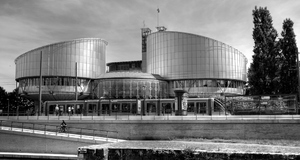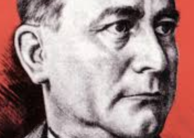Appellate Attorney as Storyteller: A Postmodern Analysis of Narrative in Appellate Briefs
By
2015, Vol. 7 No. 02 | pg. 1/2 | »
KEYWORDS:
The idea that narrative has an important role to play in the legal process is not a particularly radical one, at least since the rise of the scripted courtroom drama as entertainment. After all, this is a common genre in television and movies. The courtroom drama is dramatic because of the compelling story the parties have to tell and how that story gets told through the trial court process. An appellate judge poring over briefs filled with legal analysis simply would not make for the most compelling television. However, it would show the shift in priorities that has traditionally occurred from the trial to the appellate process.
The appellate process, on the other hand, has a completely different set of priorities. Rarely do television courtroom dramas depict the proceedings of an appellate court, and not merely because the appellate court rarely schedules cases for oral argument. An appellate judge poring over briefs filled with legal analysis simply would not make for the most compelling television. However, it would show the shift in priorities that has traditionally occurred from the trial process to the appellate process. Generally, appellate judges are considered to be more deliberate and less emotional than juries (Anderson, 2010, 1). Thus, rather than presenting the most compelling stories, the appellate process has traditionally concerned itself primarily with legal analysis geared toward finding the truth through the use of logic. Aristotle set forth three main methods of persuasion: ethos, pathos and logos (Sheppard, 2009, 255-56). Ethos has to do with the believability and trustworthiness of the speaker. Pathos involves evoking some sort of emotional response on the part of the hearer, and logos consists of an argument based on analysis of the words themselves and an appeal to logic. Generally, pathos is associated with “the emotional or narrative aspects of argument” (Anderson, 2010, 3)."It may not make for the most riveting courtroom drama, but narrative in appellate briefs could lead to something more significant. Through narrative, a judge reading an appellate brief is invited to see a party to a lawsuit, even one of a different racial or ethnic group, a different gender or different socioeconomic circumstance, as sharing in a common struggle." These characteristics make for the most compelling courtroom drama. Attorneys appeal to pathos when arguing before a jury that their clients have been wronged, and the legal process should make things right for their clients. Pathos is the stuff of narrative, of good drama, of the dramatic action of the trial court. By contrast, the appellate process has traditionally centered on logos, in-depth legal analysis and application of wide-reaching legal standards. In fact, some have considered narrative dangerous in the appellate process calling it “a parlor trick designed to draw attention away from the logic of the law” (Robbins, 2006, 769). The structure of appellate briefs reinforces this emphasis on logic versus storytelling. Forms for appellate briefs vary slightly from one jurisdiction to the next, but generally, they contain the following elements: A statement of the issues presented to the appellate court, then a statement of the case, which is a statement of the court’s rulings in the proceeding below. That is usually followed by a statement of the facts, a statement of the applicable law and argument about the proper application of that law to this case (see e.g., Hamilton, 1999, 581-82). This list of elements makes clear that the emphasis of the appellate brief is not on telling a compelling story of the facts but on logical analysis of legal theories. Indeed, only one of these elements explicitly deals with the facts, the statement of the facts, and that element occurs after the brief has already described the specific legal issues that the appellate court will be expected to consider. The system of appellate briefs using logos to limit discussion of the case to legal interpretation and logical argument worked well during the modern period. Modernism, with its emphasis on the scientific method and the power of analysis to arrive at truth, lent itself naturally to an appellate process that assumed the law consisted of a set of timeless truisms that could be applied universally regardless of the particular facts of any given case. With the dawn of postmodernism, this assumption has been found wanting. Postmodernism, which has found its way into the common consciousness only over the past seventy or so years (Docherty, 1993, 1), insists that there is no one, universal truth that can be applied to all sets of facts. While modernism assumed that logical reasoning could lead to truth, postmodernism insists that truth “is relative to the community in which a person participates” (Grenz, 1996, 14). While modernity and its scientific inquiry were most at home in appeals to logos, postmodernity and its emphasis on experience result in a reorientation in favor of appeals to pathos as most indicative of truth. Where does this leave the appellate briefing process, with its structure and methodology wrapped up in distilling truth from legal analysis? When it is no longer assumed that two sides’ legal reasoning gives rise to truth, often, the successful party is the one who tells the most compelling story. The appellate briefing process, so oriented toward analyzing legal precedent and giving an almost second-class status to facts, can be and has been used successfully as a vehicle for narrative reasoning. Through narrative, the brief not only appeals to pathos, but it also appeals to ethos, as an attorney who tells a compelling and believable story gains credibility with his or her audience. Appellate briefs generally use narrative in two main ways: In some cases, attorneys use appellate briefs, quite simply, to tell their clients’ story. These attorneys attempt to humanize their clients as much as possible in the brief, so that the appellate judge can enter into that client’s story and feel the client’s struggle. The other way attorneys generally use narrative in appellate briefs is by setting forth a meta-narrative, where their clients are not necessarily humanized but can actually be de-emphasized in favor of a story of the law’s evolution. The first of these, attempting to humanize clients and give judges the opportunity to enter into the client’s struggle, is described by Kenneth Chestek in his article “The plot thickens: The appellate brief as story” (2008). Chestek states, “People like to hear about what other people are doing, or what has happened to them. If something bad has happened, many people want to help out in some way. It is human nature to feel empathy for somebody caught up in a conflict, and to want the conflict to be resolved” (2008, 130). For this reason, Chestek insists that the appellate attorney should bring the client “conspicuously into the picture,” not by abandoning logical reasoning or analysis of legal precedent, but by incorporating narrative elements into the statement of the facts and the argument sections of the brief (2008, 130). In his article, Chestek uses a hypothetical case of a lesbian couple, one of whom had given birth to the couple’s son and then some time later died in an automobile accident. The deceased person’s mother was petitioning to have the child declared a ward of the State on the basis that the law of this hypothetical state did not allow gays and lesbians to adopt children. The attorney in Chestek’s article represents the surviving member of the couple, who is the only remaining parent the child has ever known but is currently forbidden by state law to adopt the child. The argument on appeal is that the law forbidding gays and lesbians to adopt children should be struck down as unconstitutional. Chestek goes through the elements of narrative, setting, conflict, character, point of view, theme, and plot, to show how each can be used most effectively by our hypothetical attorney in drafting this appellate brief (2008). Some of these elements are already settled by the form of the appellate brief itself, such as the point of view, since the brief is written by the attorney, a third person, who sees things from the point of view of her client. Generally, the issue of character will also have been decided, at least insofar as the attorney will want to portray his or her client as the protagonist of the story. In Chestek’s hypothetical example, though, the attorney chooses to make the family unit of the mother and child together the protagonist of the story, in an effort to reinforce the case as being about a family relationship rather than a referendum on a gay or lesbian lifestyle (2008). Likewise, the antagonist of the story will generally be the opposing party of the lawsuit, but Chestek expands that concept in his example as well. He shows the attorney has a choice about whether to cast as antagonist the deceased person’s mother, who technically was the opposing party in the lawsuit, the State that has passed the law in question, or the county children’s services agency. This hypothetical attorney rejected making the opposing party the antagonist, because it may make the case sound “too much like a battle of spite between two people who intensely disliked each other” (Chestek, 2008, 144).Continued on Next Page » Suggested Reading from Inquiries Journal
Inquiries Journal provides undergraduate and graduate students around the world a platform for the wide dissemination of academic work over a range of core disciplines. Representing the work of students from hundreds of institutions around the globe, Inquiries Journal's large database of academic articles is completely free. Learn more | Blog | Submit Latest in Law & Justice |



















